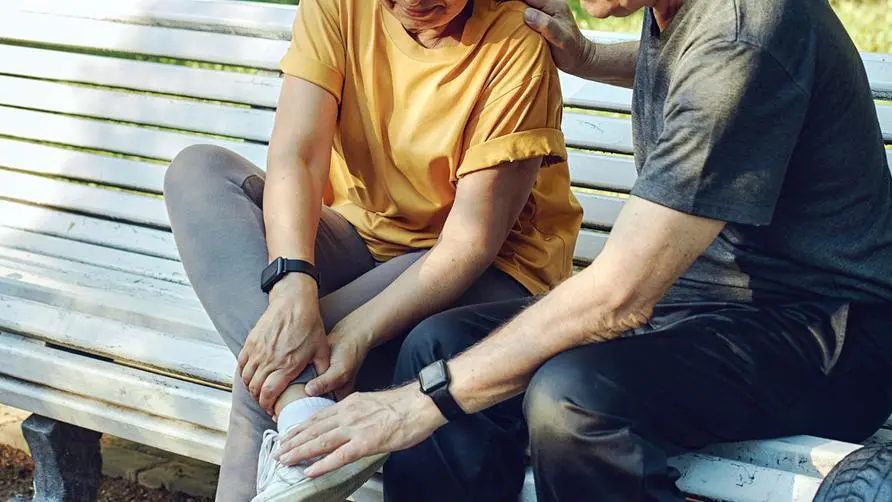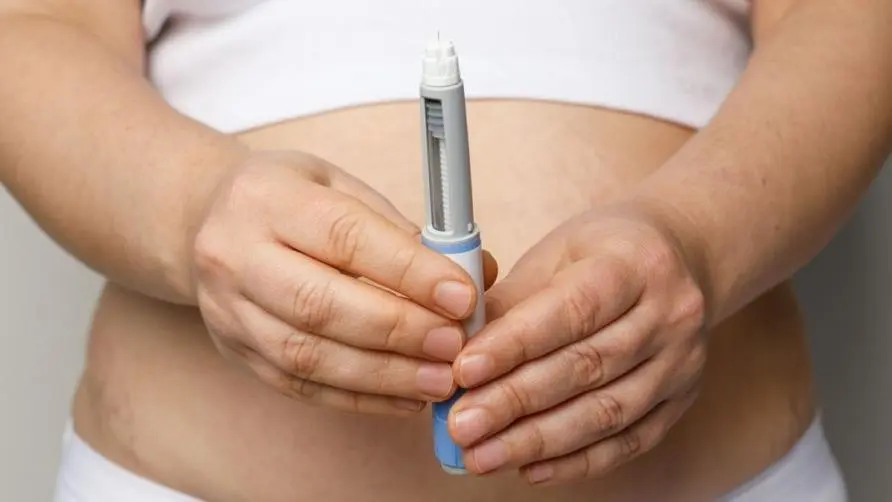He couldn't even take two steps without feeling sore and numb in his feet! An examination revealed that the arteries in the lower limbs were "completely blocked": if it were too late, the limb would have to be amputated

He couldn’t even take two steps without feeling sore and numb in his feet! An examination revealed that the arteries of the lower limbs were “completely blocked”
My feet feel sore after walking for a short distance, and I even need to rest 2 or 3 times before I can continue walking. Could this be a sign of “arterial obstruction in the lower limbs”? Dr. Zhang Zhao, Director of the Cardiac Intensive Care Unit of the Cardiovascular Center of Cathay General Hospital, said that he had previously treated a 70-year-old male patient. In recent years, he found that he often felt sore and numb when walking. In the past, he could accompany his wife to the market not far from home to buy groceries, but Recently, I had to take many breaks to get relief.
The patient’s feet would be sore every time he walked for a short distance, and he would even experience severe pain in his lower legs and abdomen. Although it improved slightly after resting, he gradually had soreness in his feet even while resting. The toes and insteps were also cold, and the wounds were not easy to heal. and other phenomena. After the patient went to the hospital for treatment, after the doctor inquired about the medical history and performed a physical examination, he suspected “lower extremity arterial obstruction” and needed to immediately arrange for peripheral vascular ultrasound examination and lower extremity arterial angiography.
After medical examination, it was found that the patient’s proximal femoral artery had severe vascular obstruction and stenosis, and “lower extremity arterial angioplasty” was immediately performed to open the blocked part. Due to the small wound and quick recovery of this surgery, the patient can get out of bed on the same day and be discharged home the next day; the symptoms of foot pain are significantly improved. Through measures such as quitting smoking, taking medication regularly, and regular outpatient follow-up, the patient no longer suffers from soreness and numbness in his feet.
Peripheral artery occlusion causes lower limb necrosis? Medical warning: Delay in seeking medical treatment risks amputation
The severity of arterial occlusion in the lower limbs varies, ranging from affecting walking to severe necrosis of both feet and limbs leading to amputation. Although there is no immediate fatal risk, it may still cause difficulty in mobility or even disability. Supervisor Dr. Zhang Zhao pointed out that peripheral arterial obstructive disease (PAOD) refers to the narrowing of the arteries supplying the feet, resulting in obstruction, and blood cannot be fully supplied to the feet, causing the limbs to become hypoxic and cyanotic, or even cause necrosis and require amputation.
Supervisor Dr. Zhang Zhao pointed out that if the above symptoms occur and lower limb arterial obstruction is suspected, you should seek help from a cardiovascular doctor as soon as possible to confirm the severity and scope of the disease through peripheral arterial ultrasound, segmental pressure examination of the lower limbs, and vascular photography. Treatment can be roughly divided into drug treatment, endovascular surgery (commonly known as blood vessel opening), and surgical bypass surgery.
How is peripheral arterial occlusive disease treated? Is the two-pronged approach of “surgery + drugs” more effective?
In recent years, due to the advancement of equipment and technology, endovascular surgery has gradually become the preferred treatment method for treating arterial obstruction in the lower limbs. Its advantages are small incision (minimally invasive), low risk, low postoperative pain, and it can be segmented as needed. Or do it repeatedly. However, not all patients can be treated with this method, and some lesions still require traditional surgical bypass surgery to effectively reestablish blood circulation.
Supervisor Dr. Zhang Zhao emphasized that no matter what treatment method is adopted, it is usually recommended to combine drug therapy (including antiplatelet drugs, vasodilator drugs or thrombolytic drugs, depending on the condition) to achieve better long-term treatment effects. At present, many hospitals are equipped with new hybrid operating rooms, which combine the advantages of minimally invasive intraoral and intravascular surgeries and traditional surgeries to provide patients with more complete treatment.
It’s not just about adjusting your eating habits! “6 things you must do” to maintain blood vessels throughout the body
For systemic vascular maintenance, in addition to adjusting dietary habits (such as less oil, less salt, and a high-fiber diet), supervisor Dr. Zhang Zhao reminds that it is also crucial to correct risk factors, such as the “three highs” of hypertension, hyperlipidemia, and hyperglycemia. Patients need to follow the doctor’s instructions to control their condition, and quitting smoking is the key to avoiding further damage to blood vessels. Others include keeping the distal limbs warm in winter, exercise training, weight control, etc., which are also helpful in maintaining the arteries of the lower limbs.
“Lower limb arterial occlusion is a disease with a high incidence, but is often ignored; patients’ leg symptoms are often regarded as neurological or bone and joint diseases and delayed treatment!” Supervisor Dr. Zhang Zhao said that if the public suspects that foot symptoms are related to lower limb arteries, If there are signs of obstruction, it is recommended to go to the hospital for a complete ultrasound examination and angiography examination. Endovascular surgery or surgical bypass surgery can be performed according to the needs of the condition. Combined with post-operative drugs and treatment, it is expected to solve the annoying problem of lower limb arterial obstruction.
Further reading:





